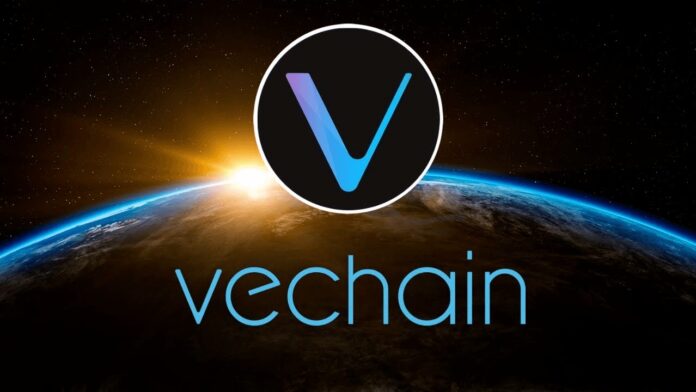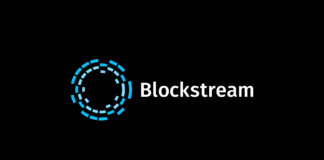In recent years, the intersection of blockchain technology with supply chain management has given rise to innovative solutions aimed at enhancing transparency, efficiency, and traceability. At the forefront of this revolution stands the VeChain blockchain, a platform that leverages the power of the Internet of Things (IoT) and smart contracts to transform traditional supply chain models. By addressing common challenges such as counterfeiting and loss of information, VeChain offers comprehensive blockchain supply chain solutions where businesses can monitor their supply chain process in real-time. This has sparked a growing interest in understanding exactly what is VeChain crypto, its operational mechanisms, and why it has become a pivotal player in the realm of blockchain technology in supply chain management and enterprise adoption.
This article aims to provide a thorough exploration of VeChain, beginning with its inception under the stewardship of Sunny Lu and its evolution into a leading blockchain platform for supply chain management. Covering key aspects such as the functionality of the VeChain blockchain, how it employs IoT and smart contracts for data capture and traceability, and the dual token economy of VET and VTHO that fuels its operations. Additionally, we delve into real-world VeChain use cases that demonstrate its massive potential for adoption across various industries, the advantages it offers over traditional ERP systems, and the challenges it faces in a competitive blockchain ecosystem. Through this exploration, we aim to shed light on what is true about VeChainThor (the underlying platform), what is VeChain coin, and how VeChain stands to redefine the future of supply chain management.
Related Read: Top 10 Apps to Buy Crypto with Credit Card in 2024
History of VeChain

Foundation by Sunny Lu
VeChain was founded in 2015 by Sunny Lu, the former CIO of Louis Vuitton China. He brought his extensive experience in luxury goods and logistics to the blockchain industry with the aim of solving common issues such as counterfeiting and inefficient inventory management in supply chains. VeChain started as a subsidiary of Bitse, one of China’s largest blockchain companies, which provided a solid backing and a wealth of resources for its development.
Major Milestones
Since its inception, VeChain has achieved several significant milestones that have contributed to its prominence in the blockchain sector. In 2016, VeChain launched its first blockchain solution aimed at the luxury goods sector, enhancing product authenticity and quality control. This was followed by the development of the VeChainThor blockchain in 2018, which introduced features such as proof-of-authority consensus, and the dual token system comprising VET and VTHO, enabling efficient working capital management.
One of the landmark achievements was the partnership with Walmart China in 2019, which involved the launch of the Walmart China Blockchain Traceability Platform, built on the VeChainThor blockchain. This initiative significantly boosted VeChain’s visibility and adoption in the market, showcasing its potential for cross-border trade and supply chain efficiency.
These milestones highlight VeChain’s commitment to innovation and its steady progress toward enhancing supply chain management and business processes through blockchain technology.
You can Download Vechain Original Whitepaper from here.
Functionality of VeChain
Blockchain Architecture
VeChainThor, the layer 1 blockchain that powers the VeChain ecosystem, is designed for mass adoption by enterprises of all sizes. It boasts a public permissioned blockchain architecture intended to serve as a robust foundation for a sustainable and scalable enterprise blockchain ecosystem. Since its inception, VeChainThor has maintained a 100% uptime record since the mining of its genesis block in June 2018. This blockchain is not only fast, producing blocks every 10 seconds, but also energy-efficient, consuming only 0.04% of the energy required by other blockchains.
The Proof of Authority (PoA) consensus algorithm is central to VeChainThor’s functionality. It relies on 101 Authority Masternodes, which are selected through a rigorous know-your-customer process, to produce blocks. This system enhances speed and security while ensuring that all participating nodes are accountable and incentivized to act in the network’s best interest, fostering trust among supply chain partners.
Token Usage
VeChain’s dual-token system plays a pivotal role in its blockchain ecosystem. The VeChain Token (VET) serves as the primary medium of value, often referred to as “smart money,” facilitating investment, transactional activities, and stakeholder voting within the ecosystem. On the other hand, VeChainThor Energy (VTHO), generated by holding VET through VeChain staking, is used as “gas” to power transactions and operations on the blockchain. This system helps decouple the cost of using the blockchain from the market price of VET, thereby stabilizing transaction costs and promoting efficient resource allocation.
VeChain’s meta-transaction features enhance user experience and development on the blockchain. These include multi-party payment systems that enable smooth user onboarding through flexible transaction fee delegation, and multi-task transactions that allow batch payments and various contract functions within a single transaction, streamlining trade finance processes. Moreover, transaction dependency settings ensure that operations are executed in an order that meets business needs, thereby enhancing the blockchain’s utility for complex supply chain applications and real-time visibility.
By continuously evolving and adapting to meet emerging needs through regular protocol upgrades and security enhancements, VeChain ensures that its blockchain remains a cutting-edge solution for enterprise adoption.
Operational Mechanisms
Proof of Authority
VeChain’s operational backbone is its unique Proof of Authority (PoA) consensus mechanism. Initially launched as PoA 1.0 with the VeChainThor blockchain in 2018, it featured a system where Authority Masternodes, after rigorous identity disclosures and Know-Your-Customer (KYC) procedures, were responsible for block validation. This model was noted for its efficiency and minimal energy consumption but had limitations in scalability and financial flexibility. In 2022, VeChain introduced PoA 2.0, a significant upgrade that enhanced scalability, security, and data finality, addressing the earlier version’s challenges and pushing the blockchain towards higher operational efficiency, crucial for data sharing among supply chain partners.
The PoA model does not require computational competition, thus deviating from the “longest chain” rule typical in other blockchain architectures. Instead, it uses a deterministic pseudo-random process and active/inactive statuses for Masternodes to ensure fairness and security in block production. This approach not only maintains continuity and stability but also prevents potential 51% attacks, common in other consensus models, ensuring tamperproof records.
VeChain ToolChain
A central element to VeChain’s functionality is the VeChain ToolChain, a comprehensive blockchain platform that supports businesses across various scales and industries. This platform provides Platform-as-a-Service (PaaS), Software-as-a-Service (SaaS), and Blockchain-as-a-Service (BaaS) models, enabling easy integration of blockchain technology into existing business processes and ERP systems.
The ToolChain offers tailored solutions such as the Food Safety Track & Trace SaaS, which utilizes smart tags like NFC, RFID tags, or QR codes to monitor products throughout their lifecycle. This integration ensures that data regarding a product’s journey is immutable and transparent, stored securely on the decentralized ledger. Such features not only enhance traceability but also bolster consumer trust and brand recognition, aiding in counterfeit prevention.
Furthermore, VeChain’s low-code deployment options within the PaaS model allow businesses to customize blockchain applications without starting from scratch. This flexibility is crucial for adapting to diverse industry needs and promoting transparency and efficiency in operations such as product lifecycle management and environmental sustainability reporting.
By continuously evolving its operational mechanisms and tools, VeChain demonstrates a strong commitment to leveraging blockchain technology for practical, real-world applications, significantly impacting how businesses manage their supply chains and data integrity.
Adoption and Real-World Use Cases
Key Partnerships
VeChain has established high-impact partnerships that significantly contribute to its widespread adoption across multiple industries. Notable VeChain partners include global giants like BMW, which has integrated VeChain into its Startup Garage Program to explore the use of blockchain for vehicle data storage. Similarly, the partnership with DNV GL has enabled the development of My Story™, a digital assurance solution that enhances the traceability and credibility of products in the food and beverage industry.
Moreover, VeChain’s collaboration with PwC, one of the Big Four auditors, extends blockchain solutions to an extensive client base, including major corporations like IBM and Ford, thereby enhancing product verification and traceability. This strategic alliance not only boosts VeChain’s credibility but also ensures its technology is utilized by numerous Fortune 500 companies, promoting broader enterprise adoption.
Industry Applications
VeChain’s blockchain technology is leveraged across various sectors to solve industry-specific challenges, enhancing transparency and efficiency. In the luxury goods sector, VeChain’s solutions are used to verify the authenticity of products such as watches and handbags, ensuring consumers receive genuine products. This VeChain use case is crucial in combating counterfeiting, a significant issue in the luxury market.
In the automotive industry, VeChain tracks components and parts throughout the supply chain, ensuring timely delivery and adherence to quality control standards. This capability is vital for manufacturers like Renault and BMW, who require precise and reliable supply chain operations to maintain production efficiency and brand integrity.
The food safety sector also benefits from VeChain’s technology, which enables product tracking from farm to table. By using sensors and other IoT devices, VeChain provides detailed information about the origin and quality of food, thus ensuring safety and compliance with health regulations. This application is exemplified by Walmart China’s use of the VeChainThor blockchain to enhance food traceability and safety.
Furthermore, VeChain supports sustainability initiatives, such as the ReSea Project, by developing systems that enable organizations to collaborate on environmental projects like waterway cleanup, demonstrating the platform’s versatility and commitment to social responsibility.
These real-world applications underscore VeChain’s ability to adapt its blockchain solutions to meet diverse industry needs, driving its adoption and highlighting its potential to transform traditional business processes.
Advantages of Using VeChain
Lowering Entry Barriers
VeChain significantly lowers the entry barriers for businesses looking to integrate blockchain technology into their operations. By offering a dual-token system, VeChain separates the cost of using the blockchain from market speculation, which is crucial for enterprise adoption. The VET token serves as a medium for value transfer, while VTHO represents the cost of using the VeChainThor platform. This structure ensures that businesses can budget and forecast their blockchain expenses without worrying about the volatility often associated with digital tokens.
Additionally, VeChain’s ToolChain suite provides turnkey solutions with Platform-as-a-Service (PaaS), Software-as-a-Service (SaaS), and Blockchain-as-a-Service (BaaS) models. These services allow businesses to deploy blockchain applications quickly and with minimal technical expertise, further reducing entry barriers and accelerating adoption across various industries.
Enhanced Data Transparency
VeChain’s blockchain architecture enhances data transparency and integrity across the supply chain. By utilizing a combination of public and private blockchains, VeChain ensures that all transaction data is immutable and transparent, while sensitive information remains protected. This dual-layer protection allows businesses to share critical data with stakeholders without compromising their operational security.
The transparency provided by VeChain not only helps businesses track and verify the authenticity and quality of their products but also ensures compliance with stringent regulatory requirements. For example, in sectors like pharmaceuticals and food production, where product safety is paramount, VeChain enables companies to prove the provenance and quality of their goods, thereby safeguarding against counterfeiting and ensuring consumer trust.
Furthermore, VeChain’s meta-transaction features streamline the user experience by allowing for flexible transaction fee delegation and multi-task transactions. This ensures that businesses can perform various operations within a single transaction, which simplifies processes and enhances the efficiency of data handling.
By leveraging these advanced features, VeChain provides a robust platform for businesses to enhance their supply chain management, improve transparency, and reduce operational costs, making it a valuable tool in today’s competitive market.
Challenges Facing VeChain
Scalability Issues
VeChain, despite its innovative approach to blockchain-powered supply chain management, faces significant scalability challenges. One of the inherent issues is blockchain bloating, which refers to the potentially unmanageable increase in the size of the blockchain. For instance, an archival node on Ethereum’s blockchain requires nearly 1TB of storage space, a demand that could be even more onerous for VeChain given its complex supply chain applications. This scalability concern could hinder the platform’s ability to sustain its intended performance levels, particularly for Internet of Things (IoT) applications and extensive supply chain management systems.
Furthermore, the scalability of blockchain technology is a well-documented problem, with solutions often requiring significant modifications to the system rather than simply adding more resources. This is particularly challenging in decentralized systems like VeChain, where changes must be agreed upon by a consensus rather than dictated by a central authority.
Centralization Concerns
The decentralized nature of VeChain, which is typically seen as a strength, also presents unique challenges. The lack of a central administrator means that manual overrides are not possible, limiting the ability to address issues swiftly and potentially reducing the platform’s appeal in situations where quick interventions are necessary.
Additionally, VeChain’s reliance on the Proof-of-Authority (PoA) consensus mechanism raises concerns regarding centralization. While PoA offers efficiency and lower energy consumption, it depends heavily on the integrity and reputation of its validators. Misbehavior by validators only results in exclusion from the network and loss of reputation, with no collateral forfeiture, which might not be a sufficient deterrent. Moreover, the structure of PoA could lead to a scenario where the VeChain Foundation controls the consensus process and the evolution of the protocol, posing a risk of centralization.
These challenges highlight the delicate balance VeChain must maintain between leveraging the benefits of decentralization and ensuring robust, scalable, and flexible blockchain solutions.
Conclusion
Throughout this exploration, we’ve delved into the multifaceted technology that underpins VeChain, shedding light on its innovative blockchain solution designed to revolutionize the realm of supply chain management. From its inception and the visionary leadership of Sunny Lu to its novel use of the Internet of Things (IoT) and smart contracts, VeChain has established a robust framework for addressing some of the most pressing challenges faced by global supply chains today. The dual-token system, comprising VET and VTHO, ensures a stable and efficient economic model, facilitating a broad spectrum of transactional activities and incentivizing participation within the ecosystem. Furthermore, real-world applications across various industries underscore the platform’s versatility and its capacity to foster significant improvements in transparency, efficiency, and data integrity.
However, like any burgeoning technology, VeChain navigates a complex landscape of potential challenges and opportunities. The platform’s pioneering approach to combining blockchain technology with the physical processes of supply chain management signals a progressive step towards reshaping traditional industries. Yet, scalability issues and centralization concerns remain pivotal areas for ongoing development and innovation. By meticulously refining its consensus mechanisms and exploring scalable solutions, VeChain can continue to expand its influence and adoption across global markets. As we consider its future trajectory, it becomes evident that VeChain stands at the cusp of defining a new era for supply chain operations, poised to unlock unprecedented value for businesses and consumers alike while navigating the evolving landscape of blockchain technology.
FAQs
What is the main objective of VeChain (VET)?
VeChain is aimed at enhancing supply chain processes and business operations through secure distributed ledger technology. It aims for widespread business adoption, envisioning its technology as the future standard for supply chain management.
Could VeChain potentially reach a value of $100?
While other altcoins like AAVE and DOGE have previously reached high values, VeChain reaching $100 is considered unlikely in the near future due to slowing growth as the market matures. At a price of $100, VeChain’s market capitalization would be nearly $6.5 trillion USD.
Is VeChain a wise investment choice in cryptocurrency?
VeChain is viewed as a promising investment within the blockchain industry, due to its innovative technology, strategic partnerships, and practical applications, which indicate a potential for significant growth. However, like any cryptocurrency investment, it carries risks related to market volatility and regulatory changes.
What does the future hold for VeChain?
The outlook for VeChain (VET) up to 2028 is optimistic, with predictions of a steady average price of €0.13. This would mark an approximate growth of 334.78% from its current value, offering investors confidence in VeChain’s long-term potential.













